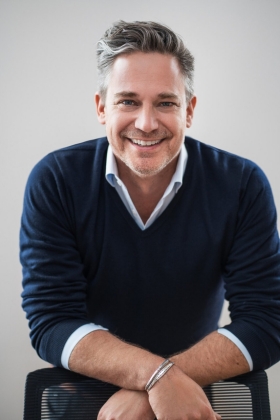The National Gallery of Canada has a new director and chief executive officer. Concordia graduate Jean-François Bélisle, BFA 04, MA 07 (art history), will lead the country’s national art museum, as of July 17, 2023.
Bélisle, who has served as executive director and chief curator of the Musée d’art de Joliette (MAJ) since 2016, brings with him a wealth of knowledge and experience, with a goal of making art and Canadian artists more accessible.
“I think the future of art in Canada is a brilliant one,” says Bélisle. “I always thought Canadian artists were underrepresented in the international scene for the quality of art that was being produced here. Hopefully, with this new position, I can help that a little bit.”
Hoping to help propel Canadian artists to greater heights and introduce international artists to new audiences throughout Canada, Bélisle believes that the National Gallery can help foster dialogue across the country. “There is one institution that has in its mandate to talk to all Canadians from coast to coast to coast, and that's the National Gallery. So, how are we going to do that?
“You can stand in front of an artwork with someone who has drastically different views on the world. Instead of talking about your individual views, you can talk about the art and let that discussion happen in a safe, more constructive, way.”
The ‘ignition spark’
Previous to the MAJ, Bélisle was co-founder and executive director of Arsenal Contemporary Art, an art and cultural centre dedicated to the promotion and development of contemporary art, as well as the executive director of the Association des galeries d’art contemporain where he launched Foire Papier (now Plural), to showcase contemporary artists and artworks from galleries across the country.
Bélisle’s love for art began when he signed up for a course with Janice Anderson, affiliate professor in Concordia’s Department of Art History. “She’s the first one who made me realize that studying art history was actually a way of studying everything — history, philosophy, politics, economics — through the lens of visual arts,” he says.
“After that one elective night class with her, I enrolled in art history full-time and decided ‘This is it. This is what I want to do.’ She was the ignition spark.”
Later, for his master’s thesis, Bélisle worked under the supervision of Martha Langford, distinguished university research professor in the Department of Art History, and research chair and director of Concordia’s Gail and Stephen A. Jarislowsky Institute for Studies in Canadian Art. Langford’s prior experience as the chief curator and founding director of the Canadian Museum of Contemporary Photography informed their conversations about what a national museum — and a national art exhibition — could look like.
“When I was studying at Concordia, I felt like I was where things were happening,” says Bélisle. “It wasn’t an ivory tower of studies. Individuals were involved in their community — in Montreal and beyond.”
‘A real dream for Canadian culture’
During his final term, Bélisle began working as assistant editor at the Montreal-based photography magazine, Ciel variable, where he helped to secure funding to expand the publication’s online presence. Langford says that it was clear then that Bélisle had talent and drive.
“He really builds from the strengths of wherever he is. I think one of the marvellous things about Jean-François is that he always had a real dream for Canadian culture,” she adds. “He brings a critical, inquiring eye. In every move that he’s made, he just wants to make the institution better and engage with different, broader publics.”
Bélisle recalls that one of the biggest impacts of his Concordia education was organizing an international graduate-student conference. After each group of presentations, Bélisle tried to link them together by finding a common thread. “I realised when I did that, it moved the needle a little bit on how people thought about their own presentation,” he says. “It created another layer of understanding, and I realise now that this is something that I’ve done for the past 30 years.”
As for what’s ahead, Bélisle emphasizes the importance of listening to, and working with, multiple perspectives to create solutions. “At the heart of everything that we do — at least in a museum — it's always collective efforts, it's always collective projects.”
 “When I was studying at Concordia, I felt like I was where things were happening,” says Bélisle. | Photo: Claudia Morin-Arbour
“When I was studying at Concordia, I felt like I was where things were happening,” says Bélisle. | Photo: Claudia Morin-Arbour